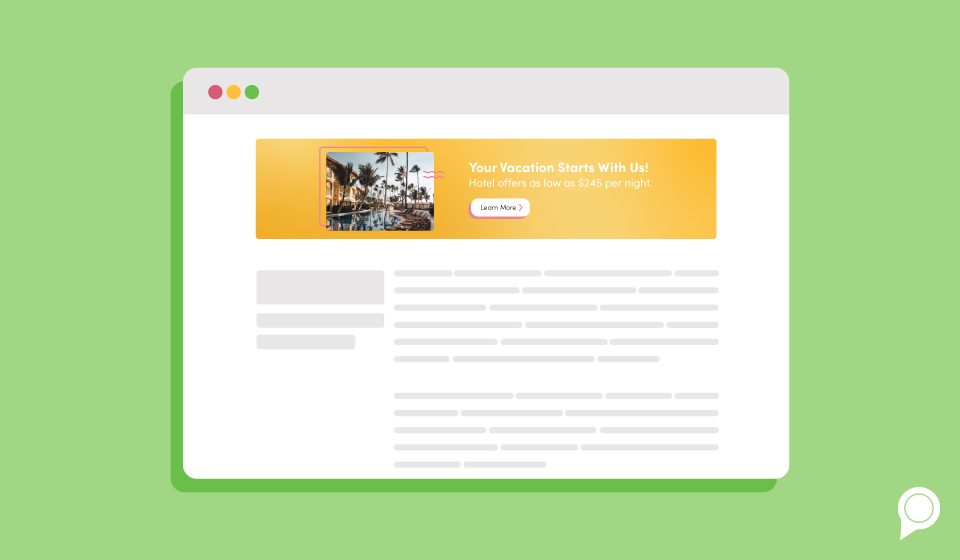

The Google Display Network (GDN) is a set of websites where Google serves display ads. There are over 2 million websites in the GDN and it reaches 90% of internet users. The display ads are served based on several factors including the audience targeting settings that marketers set up in the campaign and GDN algorithms that target location, personal user demographics, and buying behaviors.
Display ads are the most common type of ad on the internet. They show up in a variety of forms like banner ads, sidebar ads, and pop-up ads at the bottom of videos. They comprise of copy and either an image or video asset.
Display ads are designed to spark intrigue in customers early in the buying cycle. These are the ads that create demand and mastering them can mean big ROI for your business! We’ve put together the three most important best practices so you can master advertising on the GDN!
Responsive are one the different types of display ads you can choose from when creating your Google ads campaign. It’s quickly becoming the most popular format and Google is encouraging it’s use.
Responsive display ads eliminate the following problems that ads can face:
When creating a responsive display ad, you can input several different headlines, descriptions and images and videos. Google then mixes and matches those assets until it finds the highest performing ad, which then gets served most often.
During the learning phase, online users may see different variations of the same ad which relieves ad fatigue. Responsive ads can show up as banner ads, sidebar ads and pop-up ads, offering more opportunities to be shown on the GDN. Your business can showcase multiple offerings, products and services with responsive ads, which can ultimately optimize use of your budget space!
When adding the assets to Google ads, it’s important to remember that any headline could show up with any description and any image or video. So, making sure everything matches, no matter the combination, is important. Ensuring high quality images and videos will elevate the entire ad and drive even more traffic!
Remarketing ads, or retargeting ads, are ads that “follow” a user around on the internet. For example, if a potential customer browses your business’s website and takes some action, like adding an item to their cart, Google ads can create an ad specifically designed to remind that person to finish their purchase if they left the site without buying.
These ads can show up on websites in the GDN or even as emails! Google creates these remarketing ads using data harvested from tags on your business’s website. The more tags you implement on your site, the more precise your remarketing ads will be and the more actions there will be for the ads to retarget!
Keep in mind, Google doesn’t write the ad copy or choose an image at random for the remarketing ads. You will have to create different ads for the different actions taken on your site and connect them to the tracking tags. Once a user takes that action or converts in some way on your site, the remarketing ad gets triggered and served to the same user on the GDN.
Because the GDN is so expansive, Google has precise audience targeting tools. Using these tools correctly can help ensure that your ads are being served to quality leads. Google offers their own audience targeting tools to choose from and allows digital marketers to create their own audiences. Here are a few audience tools to lookout for when creating your campaigns:
These are only some of the different audience targeting tools Google offers. Google also allows digital marketers to exclude certain online user characteristics and websites that don’t fit your brand or don’t describe your ideal customer.
Understanding your audience is vital for crafting compelling ads that speak directly to their needs and wants. Using Google’s audience tools can give your ads the best chance at making the biggest impact to grow your business!
The Google Display Network is a powerful digital marketing tool that can create demand for your business! Using these three simple tips to master your GDN ads can reap big benefits and open new opportunities for your business.
RevLocal handles paid advertising and all things digital marketing for small businesses and multi-location brands. To learn more about what it’s like to have RevLocal as your business’s trusted digital marketing partner, contact us for a free consultation or check out our resources!
Subscribe to our email list to get the latest digital marketing content delivered to your inbox each week!